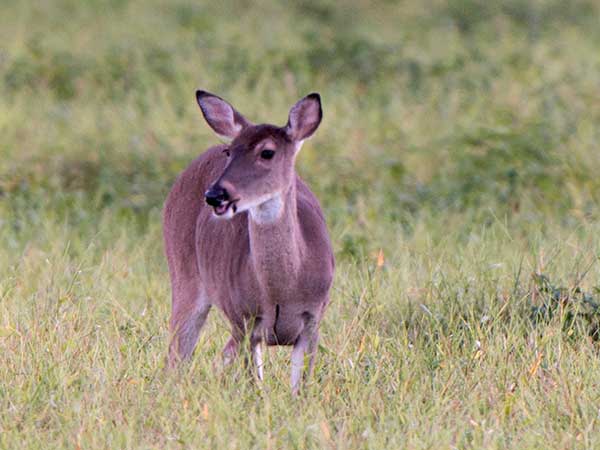By Louie Stout
 Biologists Adjust for Smaller Deer HerdNo one should be surprised that the Indiana DNR reduced the number of bonus antlerless permits it will allow in some counties this fall.
Biologists Adjust for Smaller Deer HerdNo one should be surprised that the Indiana DNR reduced the number of bonus antlerless permits it will allow in some counties this fall.
In addition, Michigan has announced it is making similar cuts in some of its southern deer management units.
After last season, most hunters welcome it. Some may even question whether it is enough.
If you missed it in last weeks column, Indiana has reduced doe permits in 19 counties, including St. Joseph, Marshall and Porter (each cut from 8 to 4 per hunter). Elkhart was cut last year.
The reasons are two-fold. First, the EHD virus that hit us the past couple of years has put a major dent in Michiana deer populations. Secondly, Indianas aggressive deer reduction plan has been doing its job.
In Michigan, managers have seen a similar trend in DMU 311 (Cass, Berrien, and Van Buren counties) where the antlerless deer quotas were cut by 27 percent on private land. DMU 312, which now includes St. Joseph, Branch and Kalamazoo counties, was cut 18 percent.
Wildlife managers have been mandated by legislators the past several years to knock back the herd to dampen the number of deer/vehicle collisions and degree of agricultural crop damage caused by an over-browsing herd.
Theyve been doing that, said Indiana deer biologist Chad Stewart, but the EHD outbreak has added a new issue and threw DNR projections for a loop. As he has discovered, northern Indiana cant be compared to the rest of the state.
Historically in the south, the herd rebounds pretty quick after a bout with EHD, but that hasnt happened in the north, he noted. The northern part of the state, with its hunter density and habitat differences, is showing it takes longer.
While the northern Indiana deer have plenty to eat thanks to all of the bean and cornfields, they have fewer places to hide.
Stewart said there are more hunters per acre of habitat here than there are in the south, where woodlots cover the hillsides. In the north, with its abundance of small woodlot parcels, a deer pushed out of one 10-acre woods simply runs to the next where other hunters are waiting. The hunting pressure is more intense. Couple that with EHD killing a lot of deer and the herd numbers drop faster.
The same principles we applied when EHD hit the south dont apply up north, so were adjusting accordingly, Stewart added.
While deer numbers are down, the herd is far from decimated, he insisted.
When will it rebound? I dont know, he said. But there are still a lot of deer out there. We are in a herd maintenance mode and will monitor it.
Statistics show that hunters killed 416 bucks and 818 does in St. Joseph County (Indiana) last season. The year before it was 484 and 931 respectively and in 2010, hunters took 612 bucks and 977 does.
The herd is coming down and thats what were trying to do, Steward said. Hunters want to see a lot of deer and so do I, but we have to keep it in balance and reach more appropriate levels.
In Marshall County, hunters killed nearly 3,000 deer in 2010. Last year it was closer to 2,100.
Michigans district biologist Steve Chadwick said trends indicate the herd is dropping in southwest Michigan as well.
So, we decided to scale back the antlerless permits and see how it goes, he noted.
Although Michigan private land quotas are still high, there is a chance that hunters who previously bought them over the counter as leftover licenses may want to apply for a permit this year.
In some areas, we lowered the quota below the number of applications we typically receive for that DMU, he explained. I recommend hunters who want those permits make an application to stand a better chance of getting one.
The application process will be announced soon.